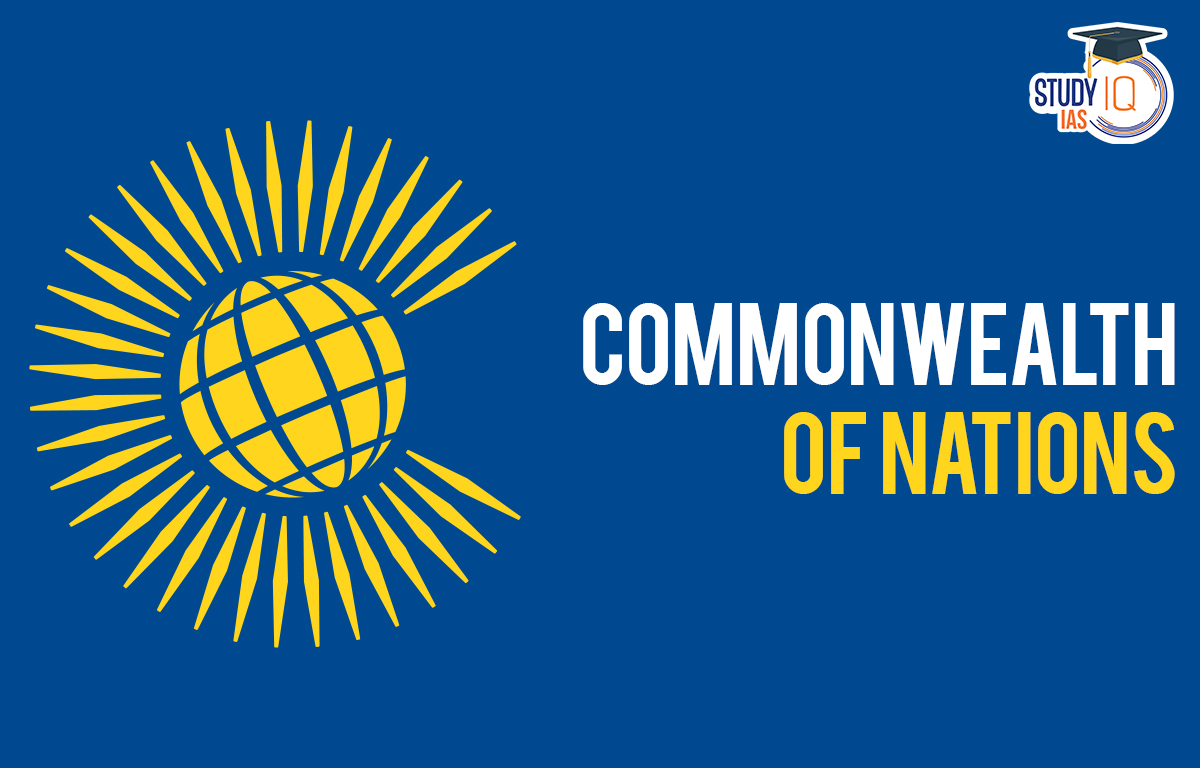Table of Contents
Commonwealth of Nations
The Commonwealth of Nations is a grouping of 54 independent sovereign nations, the majority of which were once British colonies. The Commonwealth continues to be led by the British Monarch. The organisation was founded in 1931 with the signing of the Statute of Westminster, which awarded Canada, Australia, New Zealand, South Africa, and Ireland independence. The Commonwealth has since expanded to include countries from Africa, Asia, the Caribbean, Europe, and the Pacific.
The International Relations section of the General Studies Paper-2 in the UPSC Syllabus places a lot of emphasis on international organisations and groupings. The section of international relations is quite dynamic and is important for many of the papers in the Prelims and Mains. The subject must be thoroughly read by aspirants preparing for UPSC 2023 and other Government Examinations.
Commonwealth of Nations Head
The title “Head of the Commonwealth” refers to the symbolic position of leader of the Commonwealth of Nations. There is no established tenure for this job, nor is it inherited. The Commonwealth’s member nations choose the Head of the Commonwealth, who represents the organisation symbolically.
Charles III of the United Kingdom is the Commonwealth’s current head of state. To make the selection of the President of the Commonwealth more democratic and transparent, there have even been suggestions about modifying the procedure.
The Commonwealth is led by the Secretary-General of the Commonwealth, who is selected by member countries for a four-year tenure. Patricia Scotland is the current Secretary-General, having taken office in 2016. The headquarters of the organisation is in London, UK.
During the year, the Commonwealth hosts a variety of events and activities, including the Commonwealth Games, a multi-sport event held every four years. Every year on the second Monday in March, the Commonwealth celebrates Commonwealth Day, a day to honour the organization’s values and the accomplishments of its member countries.
Read More: NATO Countries
Structure of Commonwealth of Nations
The Commonwealth primarily serves as a forum for close, equitable interaction among nations with various economic standings. The Commonwealth’s main initiatives are intended to foster economic cooperation among its members as well as the advancement of democracy and sound governance within each of them.
The Commonwealth does not permit the United Kingdom to have any influence on the affairs of the other states and is not in any way a political union. The majority of Commonwealth countries do not recognise the British Queen/King as their head of state, although some of these so-called Commonwealth Realms do (and theoretically still maintain some minimal political ties to London).
Read More: Amnesty International
List of Commonwealth of Nations
The Commonwealth includes 54 countries from Africa, Asia, the Americas, Europe, and the Pacific. Commonwealth countries are diverse; they include some of the world’s largest, smallest, richest, and poorest nations. Small states account for 32 of the members. Tiny states are more sensitive to factors such as climate change and developmental issues.
Every two years, member countries gather for the Commonwealth Heads of Government Meeting to discuss issues affecting the Commonwealth and the rest of the globe. Regardless of size or money, all members have an equal voice. This ensures that even the most remote countries have a say in shaping the Commonwealth.
Here is a list of the 54 member countries of the Commonwealth of Nations, organized by region:
| Region | Country |
|---|---|
| Africa | Botswana |
| Cameroon | |
| Eswatini (formerly Swaziland) | |
| The Gambia | |
| Ghana | |
| Kenya | |
| Lesotho | |
| Malawi | |
| Mauritius | |
| Mozambique | |
| Namibia | |
| Nigeria | |
| Rwanda | |
| Seychelles | |
| Sierra Leone | |
| South Africa | |
| Tanzania | |
| Uganda | |
| Zambia | |
| Asia | Bangladesh |
| Brunei Darussalam | |
| India | |
| Malaysia | |
| Maldives | |
| Pakistan | |
| Singapore | |
| Sri Lanka | |
| Caribbean and Americas | Antigua and Barbuda |
| The Bahamas | |
| Barbados | |
| Belize | |
| Canada | |
| Dominica | |
| Grenada | |
| Guyana | |
| Jamaica | |
| Saint Kitts and Nevis | |
| Saint Lucia | |
| Saint Vincent and the Grenadines | |
| Trinidad and Tobago | |
| Europe | Cyprus |
| Malta | |
| United Kingdom | |
| Pacific | Australia |
| Fiji | |
| Kiribati | |
| Nauru | |
| New Zealand | |
| Papua New Guinea | |
| Samoa | |
| Solomon Islands | |
| Tonga | |
| Tuvalu | |
| Vanuatu |
Read More: International Monetary Fund
Commonwealth of Nations UPSC
The Maldives has re-joined the Commonwealth, more than three years after leaving due to rising criticism of its human rights record. The Maldives left the Commonwealth in 2016. The Maldives has been re-instated as the Commonwealth’s 54th member state.
India is a key contributor to the Commonwealth network of institutions, serving as a source of funding, specialists, and training. It also accounts for a significant portion of trade among member countries. In the fiscal year 2015-2016, India was the Commonwealth’s fourth-largest contributor to its budget and the third-largest funder of its joint office at the United Nations in New York.
The Commonwealth of Nations is a topic that is relevant for the UPSC (Union Public Service Commission) exam, particularly for the international relations and current affairs sections.
Students can go to the official StudyIQ UPSC Online Coaching website for additional information about the UPSC Exam. By completing UPSC Mock Test weekly, aspirants can enhance their question-solving abilities. Simulated exams support high exam performance. To strengthen their preparations for their upcoming exams, students can take a UPSC Mock Test.


 Grameen Credit Score (GCS), Objectives a...
Grameen Credit Score (GCS), Objectives a...
 Alfalfa Flowering Plant, Benefits and Nu...
Alfalfa Flowering Plant, Benefits and Nu...
 Bluewashing: New Categorisation by CPCB
Bluewashing: New Categorisation by CPCB





















